This post contains affiliate links. We earn commissions if you purchase products from retailers after clicking on a link from our site. As an Amazon Associate, we earn from qualifying purchases.
With all the dozens of instruments, it’s easy to get mixed up between them. Band nerds (see if those still exist at my other post) might be shocked if you don’t know a particular instrument, but the rest of the world hasn’t been in band! So let’s figure all this out.
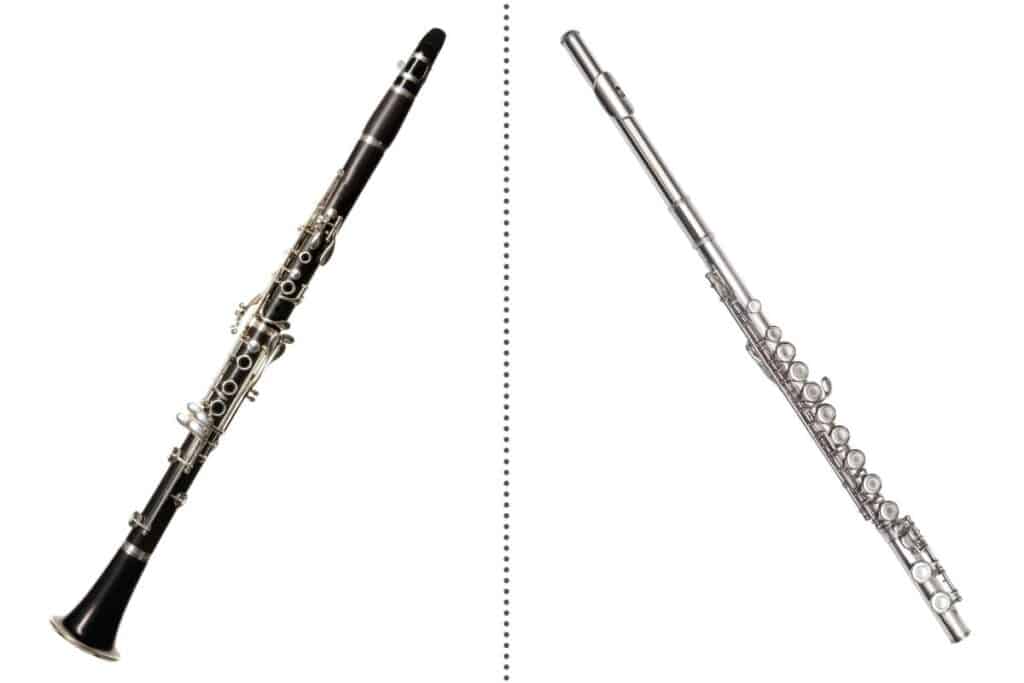
By the way, looking for recording equipment and musical instruments? Check out Sweetwater.com for microphones, monitors, audio interface or any other recording gear that you could ever need. (Affiliate Link)
The concert flute is a transverse-blown woodwind instrument that produces sound from the air vibrations caused by air exiting and entering the flute. The clarinet is an end-blown woodwind instrument that produces sound from the air vibrations caused by a reed attached to the mouthpiece.
Transverse? Reed? Woodwind? Concert flute? What is all this stuff? Don’t worry, I’ll jump into all of these things so by the end you’ll have a solid understanding of the differences between the instruments.
Since there are many types of instruments that are different types of flutes, I’ll also do a comparison with them so you can have a solid idea of the difference between all of them.
Differences Between the Clarinet and the Flute
There are several differences between the clarinet and the flute. I’ll be covering these main differences
- Physical differences
- How they sound
- How they actually make the sound
- What their purpose is
- Cost
Physical Differences and Visual
So, first off, the flute and the clarinet look different from each other.
Clarinet
The clarinet is an end-blown woodwind instrument, which means the player blows air through one end of the instrument and the direction of the air goes straight through the instrument.
The clarinet is essentially a tube with holes in precise locations and sizes which happens to be the basic idea of most woodwind instruments.
The clarinet a LOT of buttons to push and holes to cover. In fact, there are a total of 24 keys or holes available to the player on the Boehm-System clarinet which change the pitch of the instrument. There are actually even a couple of buttons on the back of the clarinet that you can’t see in the picture, below.
The player has to both blow air across the reed faster or slower as well as press the right combination of keys to get the right note.
The clarinet looks very complicated because the buttons are placed very close together so the clarinet player can press all of them without moving their hands too far. So, the buttons are connected to sophisticated rods and levers that actually lift off the holes.
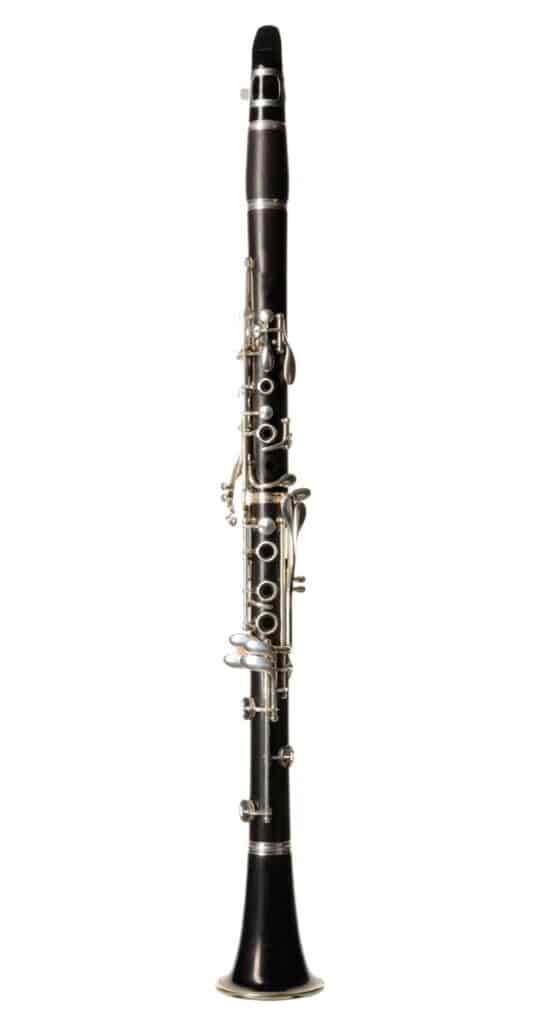
Additionally, the clarinet is designed to break down into several sections for easier storage and transportation. Examples of these sections are the mouthpiece, several body sections and the bell of the instrument.
The clarinet has a prominent bell on the bottom of the instrument that helps the sound spread out (Another way of saying this is to say the sound project). This is important because the clarinet is not a very loud instrument, especially in comparison to the rest of the orchestra.
Clarinets are often dark in color from black to a dark brown depending on the material and paint. Professional clarinets are almost always made out of wood, but many student clarinets are made out of plastic.
Flute
The flute is a transverse-blown woodwind instrument, which means that instead of blowing through the instrument, the player blows perpendicular to the main length of the instrument. In other words, the flute is held and played sideways.
Again, the flute is essentially a tube with several openings that are controlled with different keys, just like other woodwinds.
The flute has at least 16 keys that change the pitch of the instrument. The player pushes different key combinations and changes their wind speed to change how high or low the flute plays.
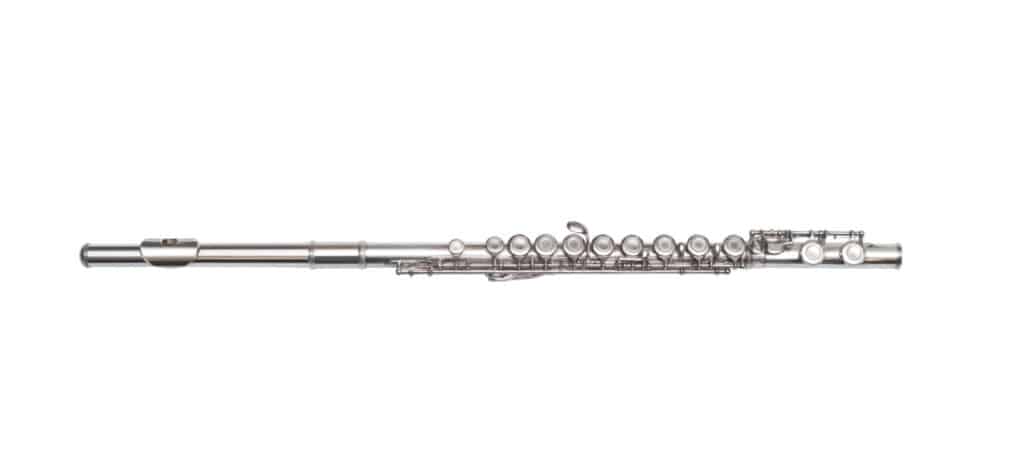
Flutes are often silver-plated or silver-painted. The main metal of the flute is often brass but can be made out of other metals. Although the flute is a woodwind, it is not made out of wood. I’m not the one who came up with that category name, anyway.
Yes, But How Do The Clarinet and Flute Sound?
This is an excellent question! One of the most important differences between the clarinet and the concert flute is the sound that they produce.
Clarinet
The Bb Clarinet has a range from D3 to G6 and above.
The clarinet has a distinct and subtle sound that I’m having trouble actually describing in words–but when I hear the clarinet I hear an earthy tone that’s well-grounded, with a slightly nasal-singing-like quality. Often the clarinet is described as having a dark sound–and although that doesn’t sound like it makes sense, it really does describe the sound of the clarinet.
The clarinet has a somewhat similar sound to the soprano saxophone, but it still has a voice all on its own.
I love love love love love the sound of the clarinet. Such a rich tone.
Flute
A Bb concert flute has a range of B3 to F7.
The flute has a sweet light sound that’s fairly breathy. As the flute goes higher in pitch the sound feels more intense (as is true for most instruments), but less breathy in any case.
The flute is bright sounding and can approach shrill in the higher register (A different type of flute called the piccolo can definitely be considered almost all-shrill).
Overall, the flute has a delicate, light, and beautiful sound.
How They Make Sound
This is probably one of the biggest differences between the concert and the clarinet.
How The Clarinet Makes Sound
The clarinet has a mouthpiece where the player blows directly into the instrument, but blowing into the instrument is not what makes the sound.
There is a special attachment to the clarinet called a reed that is attached to the mouthpiece called a ligature.
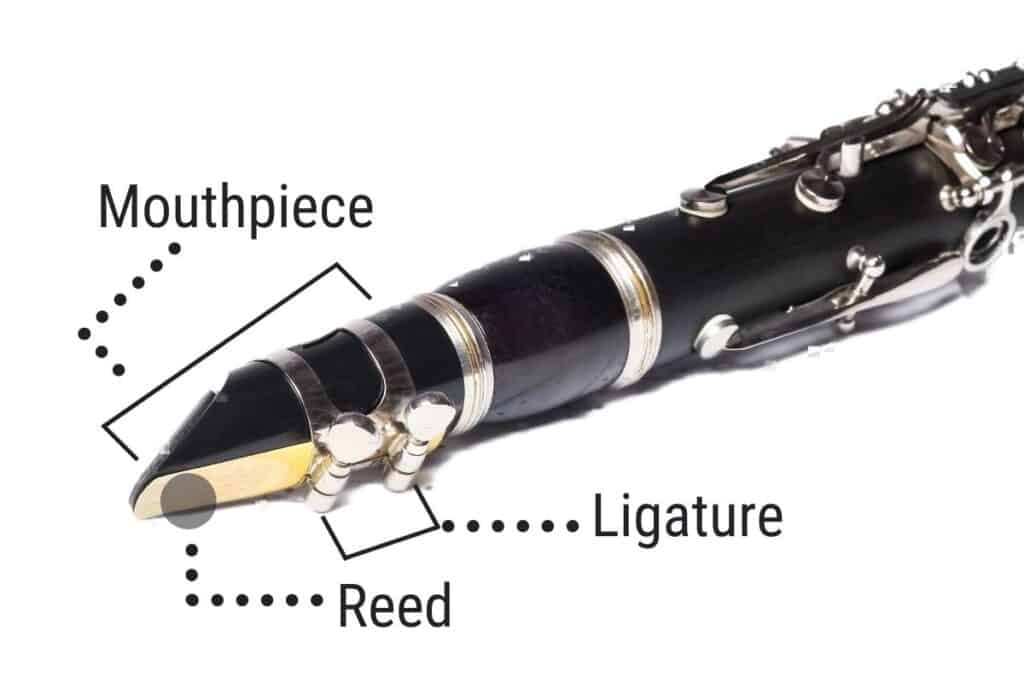
The ligature has to be tightened only to the point where the reed will stay attached to the instrument but loose enough to give the reed the flexibility it needs to vibrate.
The player rests the instrument gently inside their mouth with the reed against the lower lip. The player blows in a controlled fashion inside the instrument and across the reed.
The reed vibrates when the air moves just right and this moves the air inside the instrument.
The player must have an extremely coordinated embouchure (which is a fancy word for the lips, mouth, and tongue all working together to make the sound). The air must be controlled delicately or the instrument will squeak… and squeaking doesn’t sound good. Not to anyone. Probably not even to mice.
In short, the vibration of the reed is what causes the sound of the clarinet.
This is the same exact way the saxophone makes sound, as well.
How the Flute Makes Sound
The physics of the flute is very interesting, and very different from the clarinet. The flute player also uses a finely-coordinated embouchure (shape and coordination of lips, mouth and tongue) to blow into and across the embouchure hole.
This motion causes the air inside the flute to oscillate rapidly. The air alternates super quickly between escaping the mouthpiece of the flute and rushing in.
If you’d like to see more detailed description of the physics of the flute mouthpiece, this is an extremely detailed post from the University of New South Wales that goes into that.
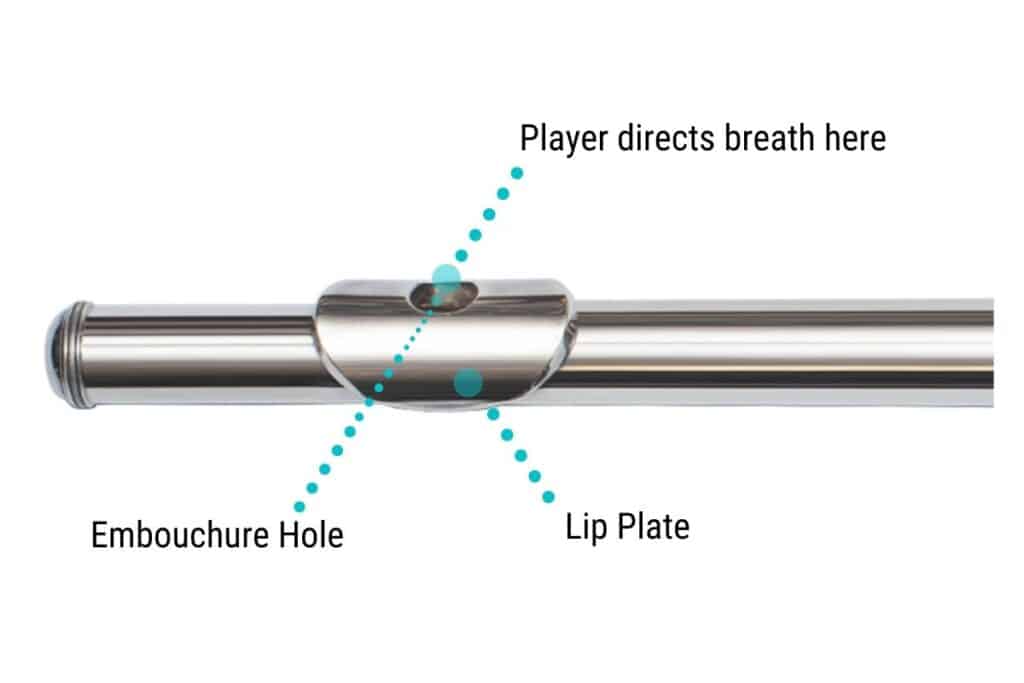
The flute player places the lip plate gently against their bottom lip and then forms their embouchure so they can blow a very focused air column against the far edge of the embouchure hole.
Speaking more practically, often if you just try to angle your air column downwards you’ll come across the spot where the sound is made.
Summary
The flute makes sound through the oscillation of the air from breath escaping and entering the flute, rapidly.
The clarinet makes sound by the clarinet player blowing across a reed causing it to vibrate which vibrates the air inside the clarinet.
Purposes In Music
As I learned from my own experiences trying to fix my own car, it’s all about having the right tool for the job.
The concert flute and the clarinet sound very different from one another. The clarinet can produce a strong tone in the lower register, while the flute can produce a stronger tone in the higher register.
The clarinet actually can play very high strongly as well, but it all comes down to the sound the composer wants in the song.
In orchestral music, because of their difference in sound the clarinets and the flutes balances each other out, and are both given extremely fast moving music parts to generate excitement and tension. Neither flutes or clarinets are exceptionally loud and so in a big loud piece with lots of brass they often are in the background filling out the song.
You’ll see flutes and clarinets in styles outside classical music, including jazz, but you’re more likely to see the flute in other rock genres if you see it at all.
Cost
When it comes to learning an instrument, you should choose the instrument you want to play, but cost is always an important thing to think about. It turns out that the average price of a clarinet and a flute are different.
Clarinet
I did some math and found that the average price to purchase a clarinet at a particular music store was $4412.35.
This average includes high-end and low-end clarinets. The data isn’t super skewed, either.
Some interesting data from this:
- 10% of the clarinets cost around $1750
- 12% of the clarinets cost around $2500
- 25% of clarinets cost around $10000
- 28% of the clarinets cost around $4000
You can definitely find clarinets for under $1000, but the majority of the models of clarinets were in the $1750 range and above.
Flute
Messing with more numbers I found that the average price to purchase a flute at this same particular music store was $4894.63.
This average includes high-end and low-end, which kind of skews the data a bit since flutes can cost well over $25,000.
Some interesting data from this:
- 12% of flutes cost around $1750
- 16% of flutes cost around $1250
- 16% of flutes cost around $10000
- 19% of flutes cost around $2500
It makes sense why flute players are extremely careful with their instruments.
There are other budget flutes that you can find but there were more models being sold in these price ranges.
Is The Clarinet A Type Of Flute?
It’s really natural to make the assumption that because the clarinet and the concert flute are woodwinds that the clarinet is a type of flute.
However, the clarinet is not a flute because of the way it produces sound. All flutes, such as fipple flutes and the traditional concert flute make their sound by blowing onto a hard edge while the air oscillates in and out of the instrument.
The clarinet on the other hand makes its sound by the reed attached to the mouthpiece of the instrument. The reed vibrates and therefore vibrates the air in the instrument.
Even the recorder, which has some strong similarities in appearance to the clarinet is still a flute because air moves past a wind blade which splits the air and creates the flute air vibration.
The Hornbostel-Sachs (Wikipedia) music system is what I’m using to categorize the flute and the clarinet.
Why Do Clarinets and Flutes Sound Different Playing the Same Note?
It’s an amazing thing– if you play a note on the flute and play the same note on the clarinet, if you closed your eyes you would easily be able to pick out which instrument was the flute and which one was the clarinet.
Why do they sound different?
It’s actually very complicated with math so crazy that there isn’t really a straightforward answer.
The sound of a wind instrument is controlled by multiple factors:
- The embouchure of the player–the way the wind is controlled through the instrument affects how it sounds
- The shape of the instrument–even two instruments made by the same manufacturer can sound very slightly different from one another due to the tiny differences in shape between the two instruments. Since the flute and the clarinet are very different shapes, the sound is vastly different between the two.
- The way the sound is produced. This is the most important difference between instruments. Brass players buzz their lips through a mouthpiece which vibrates the air in the brass instrument. Saxophonists and clarinets blow past a reed which vibrates the air of the instrument, while flutes blow against a hard edge which vibrates the air of the instrument. All of these methods are different and make a big difference in how they all sound.
So, in short, it’s complicated, but it’s mostly due to how the sound is made.
Which Is Easier, Clarinet Or Flute?
Now one difference between the clarinet and the flute is which instrument is easier?
I’ll admit my understanding of the clarinet and flute is basically only academic since I don’t play the clarinet or the flute (yet). But I’ve known many people who have learned these instruments and I can safely say that both instruments have their own unique challenges.
Clarinet
Clarinets are complicated instruments. There are 24 keys on a Bb clarinet, which is just mind boggling! The number of possible combinations actually can make the clarinet extremely difficult to play. You have 9 fingers that you can use to push buttons–that can make it really tricky in learning to transition smoothly between notes without squeaking.
Oh yeah… that’s another thing. Clarinets squeak, big time. It’s something that new players work through for years! Even a professional may let out a squeak now and again.
The reason for this is that the embouchure for the clarinet is very touchy and it’s important to solidly close the keys on the clarinet without any gaps. This sounds straightforward, but with 9 fingers to worry about you have your work cut out for you.
Furthermore, clarinets and flute players are often given fast runs in music where they have to play a lot of notes very quickly. That’s tough because of all the buttons and fingerings.
Flute
The flute is uniquely challenging because of the breath support required to play it. This is true for all wind instruments to some degree, but flute players especially are playing with very little resistance (essentially just the resistance from the shape of their mouths). This means they have to learn to budget their air extremely well, because without air there is no sound.
Since flutes also are best heard in their higher register… guess what? Their music is often really high which takes more air. So flute players definitely have to learn to coordinate their breath support extremely well.
Summary
Although both instruments have their unique challenges–these instruments are fairly evenly matched in difficulty, especially in the long run. They take years of practice to gain superb technique and to be able to play complex music.
Differences Between the Clarinet And the Recorder (a Type of Fipple Flute)
So, the concert flute is often what people think when they hear the word flute, but there are different types of flutes. One type of flute called the recorder in particular actually has a similar shape to the clarinet.
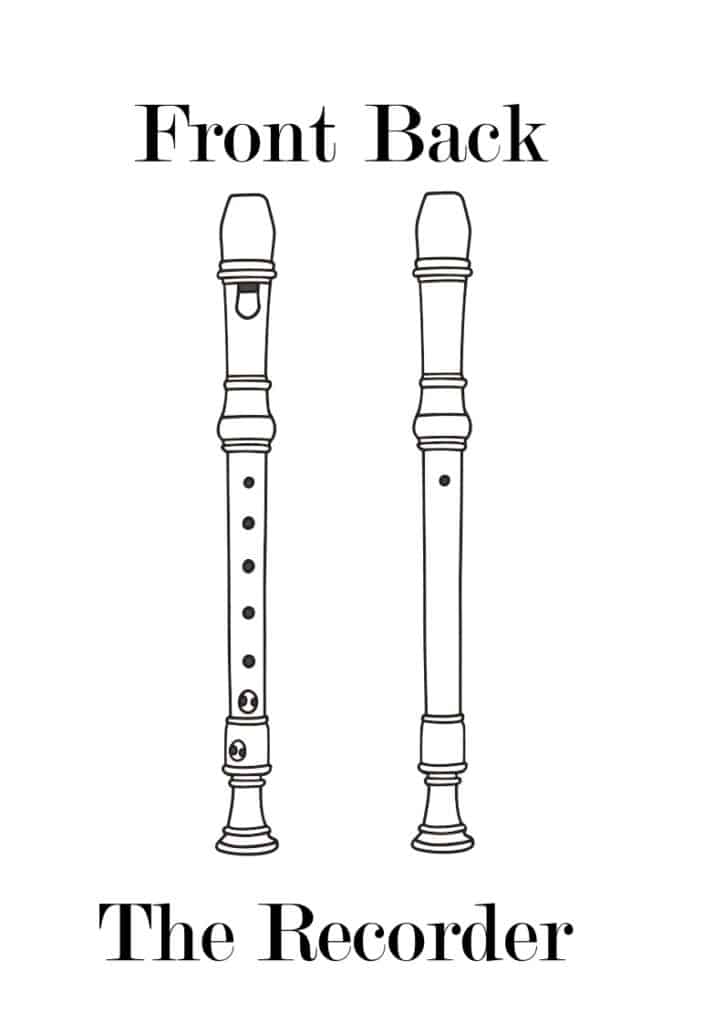
The recorder is actually a special type of flute called a fipple flute. It’s considered a flute because the sound is still made by blowing against a hard edge. The edge in this case is a blade opening into a sound hole (this is how a whistle that your coach might of had works).
The player blows into the mouthpiece of the instrument and the air goes over and under the blade at the sound hole which produces a similar air oscillation that the concert flute does.
To be clear, a recorder does not use a reed like the clarinet does to produce the sound. So even though the shape of the instrument is similar the sound is made very differently.
Another difference is that the recorder doesn’t have keys–rather it has holes that you cover with your fingers directly. In fact, recorder players have to learn to master half-covering holes so they can play all the notes in tune.
